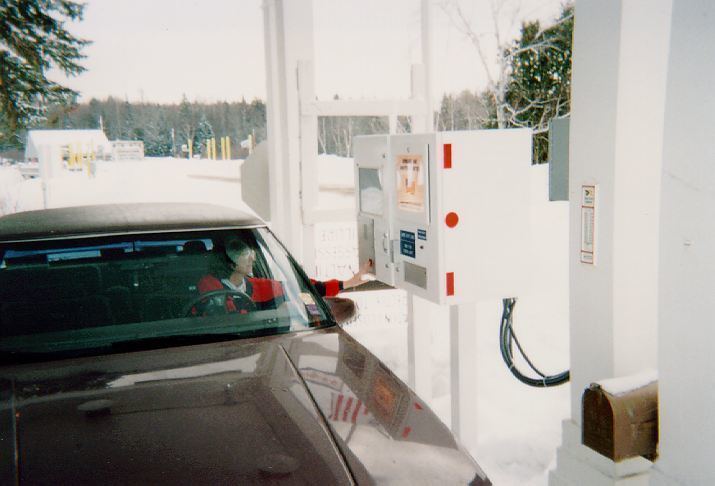 | ||
Conception
In the early 1990s, the US Immigration and Naturalization Service (INS) was interested in finding ways to enable low-risk travelers to enter the United States from Canada at small ports of entry after inspection services had ended for the day. INS commissioned its contractor EDS, as well as the Department of Transportation John A. Volpe National Transportation Systems Center and its contractors Labblee Inc. and Bishop Systems to develop and deploy a system that transmitted audio, video and data to an inspector at a nearby 24-hour port of entry. The system was originally named "Remote Inspection Communicator And Remote Document Observer" (RICARDO), but the name was changed to Remote Video Inspection System (RVIS) prior to its first deployment.
Contents
RVIS consisted of a series of cameras with pan/tilt/zoom capability, an amplified speakerphone, a card reader and a telecommunications device for the deaf (TDD). There were vehicle sensors at the Canada–United States border that initiated the system, and exit sensors that alerted operators that a drive-by had occurred. There were also area lights, a text display and a traffic signal. Some ports of entry had electronic gates for traffic management. Inspectors at the remote location could control the PTZ cameras, and conduct a verbal interview with the driver and passengers.
The first two RVIS sites were at the border crossings of Forest City and Orient in Maine in 1996. Before the end of the decade, RVIS systems had been deployed at the following ports of entry:
An additional RVIS System was planned for Morses Line, Vermont, but residents there informed the INS that they did not want the system.
Decommission
The RVIS system never achieved its full potential because its deployment pre-dated the rollout of high speed data networking at all ports of entry, which caused the video transmission to be slow and cumbersome. In addition, the events of 9/11/2001 changed the emphasis of the border inspection agencies from one of facilitation and service to one of counterterrorism and homeland security, and the RVIS system was officially decommissioned on November 1, 2002.
